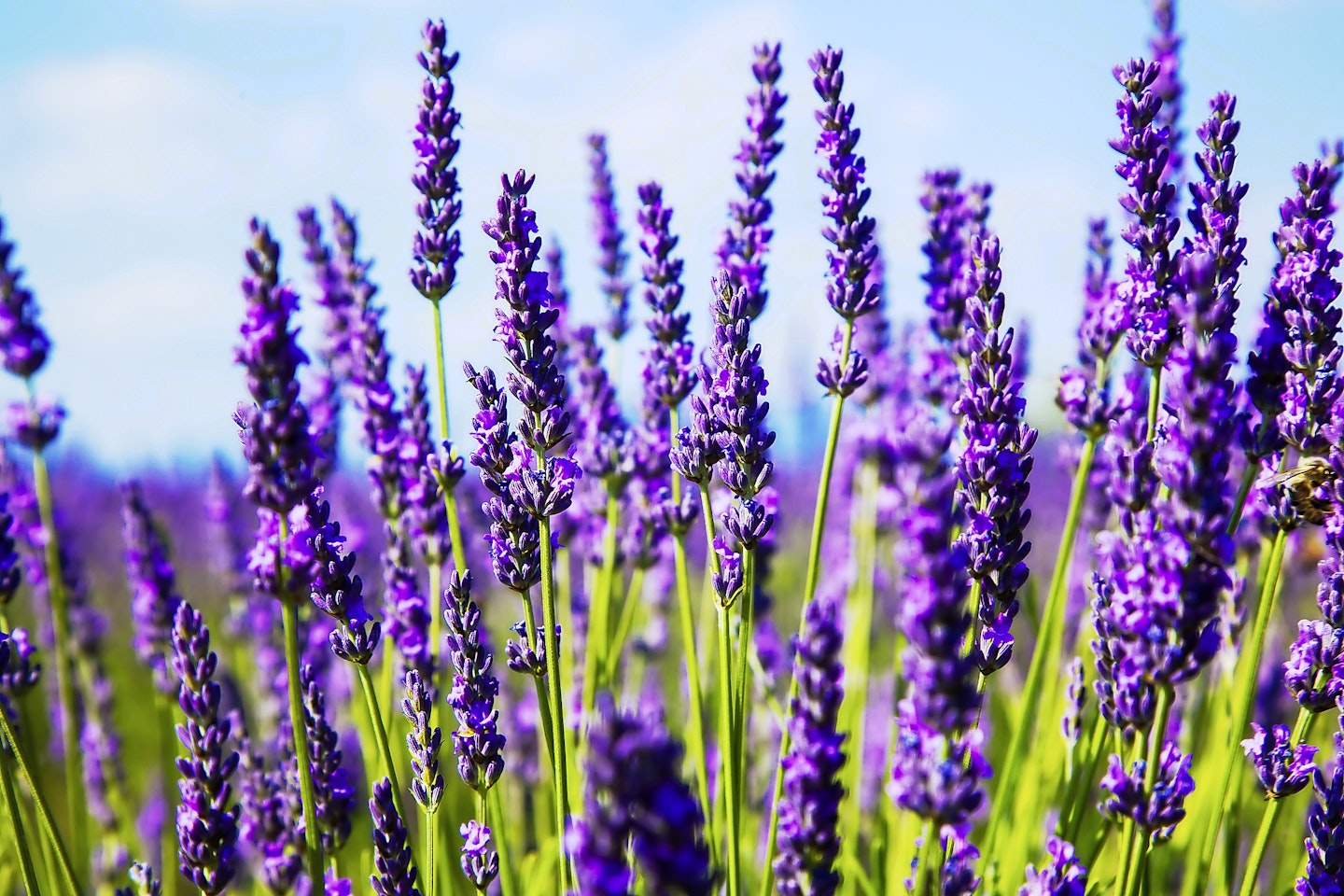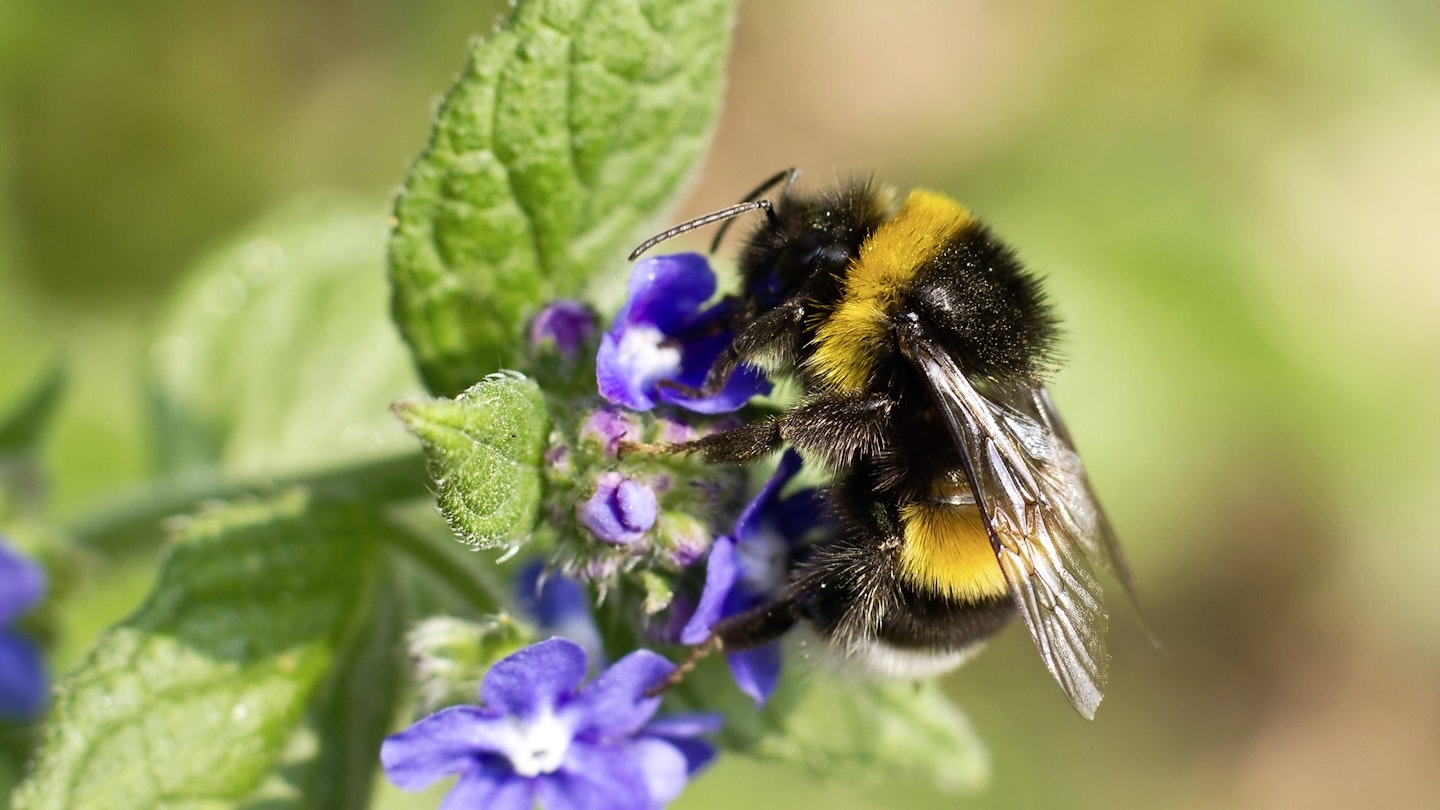Bees and butterflies have a deeply ingrained relationship with flowers. At the same time as the first flowering plants began to spread across the world, the very first bees began to appear too. From that point, each helped the other diversify. Bees began to develop longer tongues capable of reaching down into the hearts of even the deepest flowers to seek out nectar. Their bodies became hairy too, enabling them to gather pollen much more efficiently.
Close inspection of many bees today reveals stunning examples of individual specialisation, meaning each species has special pollen ‘brushes’ and ‘baskets’, each uniquely different, on their legs. Meanwhile, flowers that are pollinated by butterflies tend to be large and showy, often scented and pink or lavender in colour, with sufficiently large landing areas! But these creatures need our help.
Our gardens form an important network of varied habitat that is vital for bees and butterflies as a refuge from intensively farmed countryside and flower-free urban landscapes. A staggering 97 per cent of flower-rich grassland has been lost in the UK since the 1940s, vital habitats in which wild bees, butterflies and other insects nested and fed. This has resulted in the decline of more than two thirds of UK pollinators, including many species of butterflies and bees.
Our gardens rely on them because a whole host of flowers and fruit are pollinated via their hard work: apples, cherries, plums, pumpkins and strawberries, for example. As well as providing accommodation in the form of solitary bee and butterfly homes, gardeners can avoid using pesticides and disturbing their habitats where possible.
As far as planting goes, the good news is that growing for bees and butterflies opens up a world of beautiful options for your plot, as well as the knowledge that you’re helping these vital creatures thrive.

GARDEN NEWS RECOMMENDS
Hollyhock - With their saucer-like flowers, hollyhocks help encourage a happy ending for pollinators. These classic cottage garden plants are particularly popular with the male buff-tailed bumblebee, which value their nectar. Large groups of bees and butterflies are often visible making their way up and down their blooms that reach high into the sky – the plants can grow to 2m (6½ft). Our flying friends like tall plants easily visible from the air, so hollyhocks fit the bill perfectly, alongside larkspur, Pentaglottis sempervirens, known as green alkanet, and foxgloves. Hollyhocks are robust biennials or short-lived perennials and are often grown in dense clumps. Flowers can be pink, purple, red, white or yellow and bloom throughout the summer, making them worth their weight in gold for pollinators. Hollyhocks are a host plant for caterpillars of the painted lady butterfly, of which the British population of this beautiful butterfly dies or emigrates to Africa in the autumn. Alcea rosea ‘Nigra’ is a classic, singleflowered hollyhock, in deep blackcurrantpurple that become almost black towards its centre. This is a plant that creates real impact, particularly against light-coloured foliage or fences. ‘Halo White’ is another single-flowered hollyhock, creamy-white in colour. It flowers into September, producing tall bloom spikes on strong, bushy plants.
Purple top vervain - Verbena bonariensis is a brilliant butterfly plant, rivalling even buddleia in butterflies’ affections. It’s sometimes known as a good ‘see-through’ plant, as it’s easy to view wildlife and other flowers through its tall stems. It produces tightly packed clusters of lilac-purple flowers from June to September, helping to sustain bees and butterflies into autumn. Plant it among dahlia ‘Bishop of Llandaff’ and it will act as supports, negating the need for staking. V. bonariensis is known to attract honey and bumble bees as well as comma butterflies, fritillaries, painted ladies and red admirals.
Lavender - Research shows that late summer and autumn are difficult times for honey bees to find forage, as opposed to the spring time when most plants are blooming. Lavender, with its long flowering period, is therefore much-loved by this kind of bee. In fact, lavender, along with borage and marjoram, was revealed to be the flower most attractive to bees in a study by scientists at the University of Sussex two years ago. In findings that come as no surprise to most gardeners, highly bred varieties of lavender, including ‘Grosso’, ‘Hidcote Giant’ and ‘Gros Bleu’, were the most attractive to bumblebees. White and pink hybrid lavenders were visited as much as blue hybrid varieties, suggesting that how long the plant is in bloom and the size of the flowers are more important for the bees than the colour of the flowers. Try growing the white flower spikes of ‘Edelweiss’ for beautiful blooms from July until September, or ‘Gros Bleu’, a new varietyfrom France, for deep purple flowers and a sweet aroma. Flower spikes can grow up to 10cm (4in) on extra-long stems, making it a great choice for cutting. Just don’t forget to leave some for the bees!
Buddleia - Buddleia regularly attract red admiral, comma, small tortoiseshell, peacock, large white, small white, brimstone and occasionally meadow brown butterflies. It’s one of the go-to plants for wildlife-friendly gardeners and peaks in August, making it a magnet for pollinators at this time of year. Butterfly bush ‘Empire Blue’ is a large, violet-blue buddleia with scented flowers. For something a bit more unusual, try ‘Black Knight’, a deciduous shrub with narrow leaves and fragrant, dark purple flowers.
